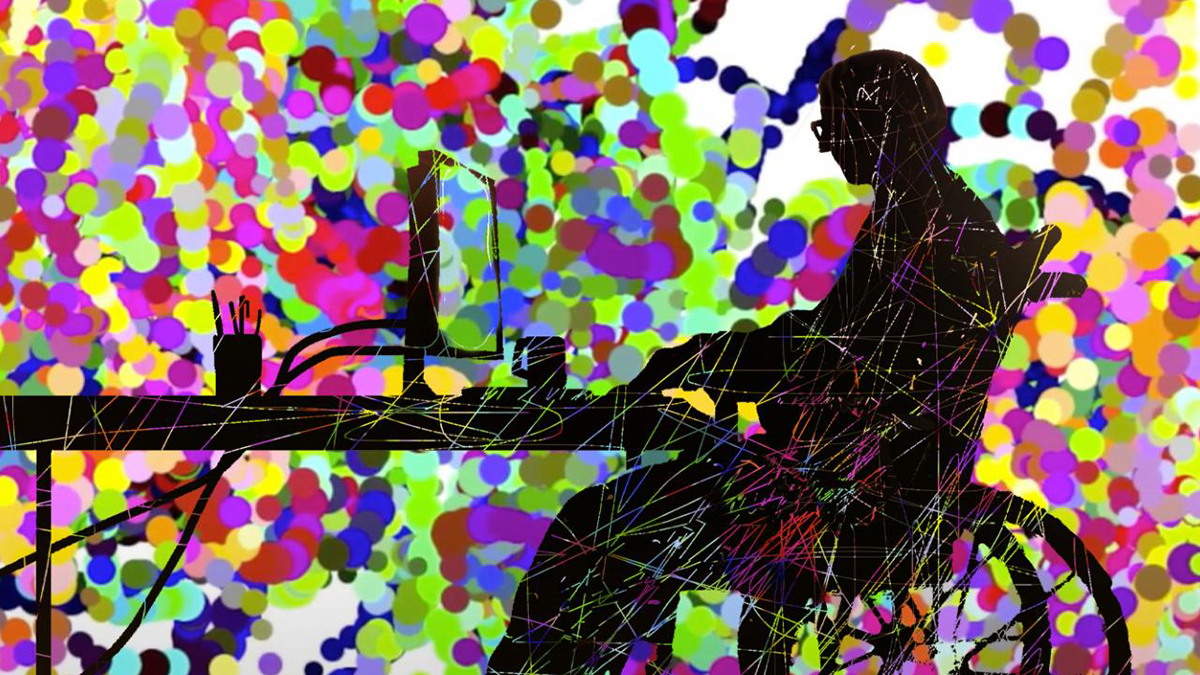Video games with a healing touch
In gaming therapy, healing comes from the right design

How can gaming technology — or virtual reality — be a rehabilitation tool that engages someone recovering from a traumatic brain injury? How can it get them to enjoy the rigorous work?
That’s the world Lise Worthen-Chaudhari lives in.
She is the associate director of Ohio State’s Human Motion Analysis and Recovery Laboratory and a faculty affiliate to the Chronic Brain Injury Program.
Her revolutionary gaming therapy, Embedded Arts, helps patients recovering from brain injuries increase their range of motion control by creating abstract art through motion sensors. It’s software that the Columbus-based company Rekovo developed for use by clinical therapists in rehabilitation.
As scientific advisor to Rekovo, Worthen-Chaudhari also developed the product Reveal, which works similarly to Embedded Arts. With this tool, movement reveals a picture that has some personal meaning to the person performing the rehabilitation.
She recently discussed her approach to design and the successes Embedded Arts and Reveal have shown. In fact, Rekovo has plenty of data to illustrate the effectiveness of the products.
The effectiveness is often written on a person's face
“The one thing I hear over and over again from clinicians is, it’s like a weight off their shoulders because the patients are spontaneously smiling. That doesn’t normally happen a lot in rehabilitation.
“As they explore the solution space on their own and their body figures it out, it’s not happening in their conscious mind. Instead it’s implicit learning and … what a relief. Patients ask to continue doing it when normally they’re saying, ‘We can’t wait to be done with this.’ This brings a sense of satisfaction to the work that has to be done.
“I actually had a doctor in physical therapy who took the technology to Rwanda. She said, ‘I’m measuring the amount of time they’re engaged, and I’m doing all the quantitative analysis but honestly I just want an outcome measure for them smiling because that’s what I’m seeing.’”
Patient stories also paint a picture
“With Embedded Arts, there was a client who was very impaired. They were an innocent victim of a gunshot wound — wrong place, wrong time, very impaired. The parts of their brain that govern or enable the function of inter-activity were badly damaged. This person was going through the motions when led through therapy but was not engaging or owning anything.
“But the minute they saw the ‘Jackson Pollock aesthetic,’ the abstract art, their system engaged for the first time, and that was the longest bout of exercise that patient had been able to produce.
“And similar to Reveal, there are people with Alzheimer’s or veterans who have been resistant to the process. And you see them uncovering a picture of their unit, or their grandkids or something meaningful. And you see the satisfaction. It’s not disco-ball fun, it’s not Vegas, but it’s meaningful.
“The actual physical activity, the process of revealing those faces provides a feedback loop that the physical activity becomes meaningful and satisfying.”
How does that happen?
“It’s not because someone poked and prodded these people; it’s because the design drew them in. It’s not that I’ve got this magic game; it’s because it’s the right design.
“I want the interactivity. And I’m platform agnostic. I just want to engage people where they’re at. Embedded Arts would be easy to translate to virtual reality. Once you get the interactive special sauce, it can easily be translated on the development side to virtual reality, augmented reality; you can do anything with this. That’s really what’s special about it.”
The design goal is an immersive experience
“I’m designing for people who are brain injured, people who have physical and cognitive deficits and that is a really different mindset. I don’t have those deficits, so I work in conjunction with people who do; it’s always stakeholder-centered.
“For instance, one thing that is important to consider is people with brain injuries get cognitive fatigue. So in my design process I have what I call my haiku aesthetic: Simplify, simplify, simplify, because they’re so easily overstimulated. So take out the bells and whistles.
“Second, you test out everything. I’ll write up a quick code and test it out. I don’t really care about the specifics but I care that it engages someone, puts them in a flow state. It should feel more like taking a walk in the woods instead of taking a walk on a treadmill.
“What it comes down to is the immersive experience or the interactive experience. That really is the heart of it. You have to design the environment so that if the person is applying even a small amount of effort, their system reinforces the implicit learning. Then it becomes self-perpetuating.”